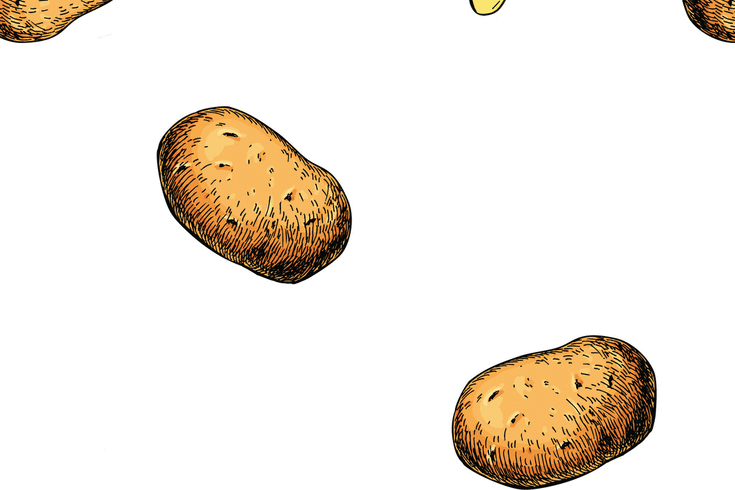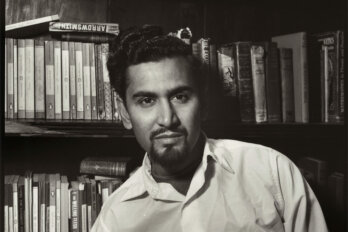In her new book, historian and academic Janis Thiessen begins with a detailed account of the snacks kept in her childhood home: the Pic-a-Pop sodas, the Old Dutch chips, the Cracker Jacks, the Kit Kats, the Eat-Mores, the Paulin Puffs, the Lucky Elephant popcorn, the Wagon Wheels, and the Mackintosh toffee her father would freeze and “smash into eatable bits with his fist.” This abundance dated back to Thiessen’s father’s Russian Mennonite childhood, one marked by a “comparative paucity of snacks.” Treats were love in the Thiessen household; as her mother said of their breakfast cookie tradition, it was important to start the day with something sweet.
A snack, by definition, is a culinary sideshow. If much depends on dinner, much less depends on how you sweeten up your coffee break. And yet, what snacks lack in nutritional heft they make up for in cultural import. Think of explaining ketchup chips to a visiting American or bringing a Coffee Crisp to a Canadian abroad. Pizza and hamburgers and poke bowls and spicy tuna rolls are consumed everywhere; ketchup chips remain ours. Snacks are the id to supper’s ego. This is Thiessen’s starting point for Snacks: A Canadian Food History: an important part of our national identity can be found in our vending machines. And her version of that history aims to include the people who make, market, and munch on this vital Canadiana.
As part of her extensive research, Thiessen gained access to the world headquarters of the W. T. Hawkins company in Belleville, Ontario, the closest thing to the Wonka chocolate factory you’ll find off the 401. And because of her work, we now know that on a bulletin board in that building, there are two collections of photographs sent in by the company’s Canadian customers.
The first shows Cheezies, the company’s one and only product, in all its infinite variety. The snack is made by extruding bits of cornmeal under great pressure, frying them in oil, and then seasoning them with cheese, salt, and oil—a process said to ensure each Cheezie is as unique as a snowflake. When you find one in the shape of a dog, an ear, or John Diefenbaker, you take a picture.
The second photo collection depicts newly retired men in recliners eating Cheezies. These are not employees of the company, just regular consumers headed into their orange-fingered golden years. This sounds like a meme, but it doesn’t appear to have any means of transmission. There has never been a #LaZCheezieSelfie contest. The Hawkins company doesn’t advertise, do social media, or solicit attention of any sort. (They reluctantly permitted their product to be featured on an episode of Corner Gas.) And don’t bother making a pilgrimage to Belleville: there’s no Cheezies factory store, public tour, or even so much as a sign on the building.
The two assemblages of pictures could represent Thiessen’s dual aims in the book: to tell us about the foodstuffs and about the people who love them.
On the food front, she satisfies. As our culture slowly, reluctantly begins to learn long-hidden truths about how our meals get made, Snacks fills in the blanks on some minor Canadian mysteries. What ever happened to Humpty Dumpty chips? (Old Dutch bought them out in the Great Canadian Chip Consolidation of 2006 and retired the brand in 2008.) What are chicken bones? (A popular cinnamon-chocolate candy made exclusively by New Brunswick’s Ganong Bros. Ltd.) What was Cuban Lunch? (Well, half points on this one; we learn that this Winnipeg-made confection was a “slab of chocolate that contained peanuts, and that was formed and packaged in the shallow, rectangular equivalent of a cupcake liner,” but neither its connection to Cuba nor its billing as a midday meal are mentioned.)
Given these details and Thiessen’s inclusion of her charming personal history, you would perhaps expect a quick survey of how little we know about these uniquely Canadian snacks, and then we could jump right into the story of how Ganong produced North America’s first wrapped chocolate bar in part because the format was “least compromising to masculine dignity.”
But no: after declaring her personal love of snacks, Thiessen draws a bull’s eye on the forehead of Snacking’s Greatest Foe. That’s right, Michael Pollan, you patriarchal, neo-liberal, ahistorical, classist, sexist, body-shaming, romantic, inadequate, impossible, nostalgic, culinary Luddite. (These are all adjectives used to describe Pollan in the first twelve pages of the book.) This blast of invective against an American whose most famous advice is to “eat food. Mostly plants. Not too much.” is like biting into an Old Dutch chip and realizing you’ve accidentally purchased their teen-oriented and long-discontinued Rave product, chips loaded with “so much extra salt that your eyes water when you open the bag.”
Thiessen has declared a food fight, putting Pollan and his compatriots on one side and the hard-working employees of Old Dutch on the other. “I can’t see where there could be junk in them,” one former plant manager says of his product. “There are potatoes. They use canola oil.” Absent are moderate voices like those of, say, the people behind the Canada Food Guide, which simply advises “limiting foods and beverages high in calories, fat, sugar and salt.” In other words, a paradise in which Cheezies and artisanal kale chips can coexist, sometimes even in the same snack cupboard. Full disclosure: this currently describes the contents of my snack cupboard.
After declaring this war, Thiessen finds herself uncomfortably allied with the likes of Doritos and Coca-Cola—after all, to defend one nutrition-free foodstuff is to defend them all. But this is a book about Canadian snacks, and so she takes pains to differentiate our virtuous snack-food producers from faceless international corporations. To wit: “Old Dutch has a flat management structure by comparison with the complex hierarchies of large multinationals.” When you’ve got that potato chip craving, only a flat org chart will do! And: “they do less research and development.” Hooray for Canadian inertia! The “on the other hand” of this pretzel-twisted argument gravely notes that Old Dutch has disturbingly corporate tendencies, such as the way they “advertise their business extensively, including by participating in community and charitable events, in ways that some scholars would deem to be paternalistic.” Said scholars are not named nor are their snack preferences listed.
These odd justifications aside, Thiessen does a deft job of examining what makes a snack company Canadian. Old Dutch is actually a Minnesota-based company, but one that has operated successfully north of the border for decades. (The American version of their website makes no mention of Canada, and the Canadian version is truthful, if not completely forthcoming, when it notes that “Old Dutch first started in Winnipeg, Manitoba as a little chip company with a lot of heart.”) Hawkins Cheezies started as an American brand and somewhat accidentally became Canadian when their Ontario branch plant outlived the headquarters. Both companies made it into this book, so they qualify as ours by Thiessen’s standards, and she does us a service by clearly presenting these cloudy backstories.
Snacks interweaves food history and labour history, and for most of the book, these histories would benefit from being unwoven. The pages on how gender division is standard in candy factories are empty calories next to the oddly affecting tale of Tom Yasumatsu, the son of interned Japanese Canadians who grew up to be manufacturing director of Paulins cookies in Winnipeg. When the plant was targeted for closure by Montreal’s Culinar Inc. in 1991 (not as a result of the Meech Lake Accord’s failure, as many Manitobans suspected), Yasumatsu undermined wage negotiations on behalf of his employees, took his team on a company-paid trip to Las Vegas, and locked head-office representatives out of the building on the last day so his workers could say their private goodbyes. Yasumatsu declined to stay with the new parent company and spent “five very lean years” looking for comparable work. All the while, he met with former Paulins employees for a weekly lunch.
But, with respect, you don’t pick up a book called Snacks for Tom Yasumatsu. You don’t pick it up for the long chapter on Kids Bids, a short-lived Western Canadian television show sponsored by Old Dutch that would be better chronicled in a book on mid-century local TV. And you don’t satisfy a craving for something crunchy with an apple. You want Hawkins Cheezies. You may even want to microwave them for 15 seconds—a customer tip that came as no surprise to Hawkins staff.
“I’m eating hot Cheezies,” former Hawkins production manager Geraldine Fobert says in one of the unique and detailed interviews that ultimately make Thiessen’s work nutritious, if not always delicious. “I am a person that eats hot Cheezies.”






